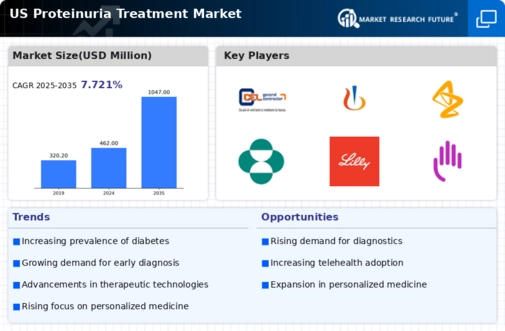The US Proteinuria Treatment Market is characterized by a diverse array of pharmaceutical products aimed at managing and treating conditions associated with excess protein in urine, a common marker of kidney disease. The market features a competitive landscape populated by various players who offer a mix of established treatments and innovative therapies.
The increasing prevalence of kidney disorders and the rising awareness about the importance of early diagnosis and management have spurred growth in this sector. Companies are focusing on enhancing their product offerings through advanced formulations, improved delivery mechanisms, and novel therapeutic approaches. Additionally, the landscape is marked by strategic partnerships, collaborations, and mergers among key players, which further intensify the competition and accelerate the pace of innovation.
Celgene stands as a notable player within the US Proteinuria Treatment Market, leveraging its strong research and development capabilities to provide effective treatments aimed at managing proteinuria-related conditions. The company has established a strong presence through its innovative therapies that target underlying mechanisms contributing to excess protein in urine.
Celgene's strengths lie in its commitment to advancing clinical research and focusing on patient-centered solutions. By maintaining robust relationships with healthcare providers and investing in educational initiatives, the company ingrains itself in the healthcare ecosystem effectively. The strong pipeline of products poised for market approval amplifies its competitive edge, enabling Celgene to respond promptly to the evolving needs of patients suffering from kidney disease.
Novartis occupies a significant position within the US Proteinuria Treatment Market, boasting a portfolio of key products designed to mitigate the impact of proteinuria in patients with chronic kidney diseases. The company's market presence is bolstered by its focus on innovative therapies and a proactive approach to research and development.
Novartis emphasizes the importance of addressing the unmet needs in the field of nephrology through ongoing clinical trials and collaborations with leading academic institutions. That positions Novartis favorably among prescribers and healthcare professionals. Moreover, the company has engaged in strategic mergers and acquisitions that enhance its capabilities in renal therapies, thus fortifying its market reach and reinforcing its reputation as a leader in this niche area. Novartis strives to improve patient outcomes through its comprehensive offerings and commitment to advancing treatment in the US proteinuria landscape.
























Leave a Comment